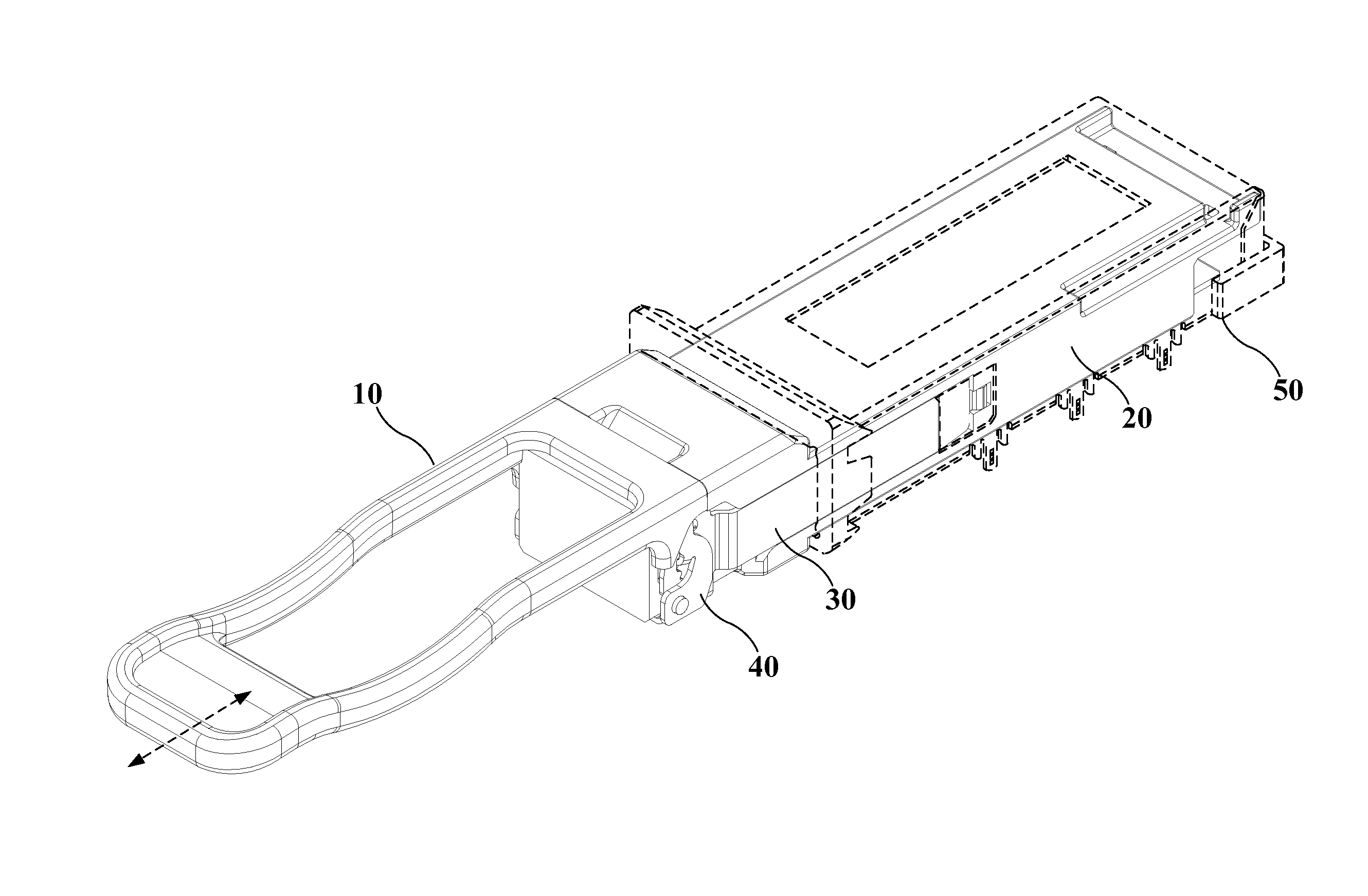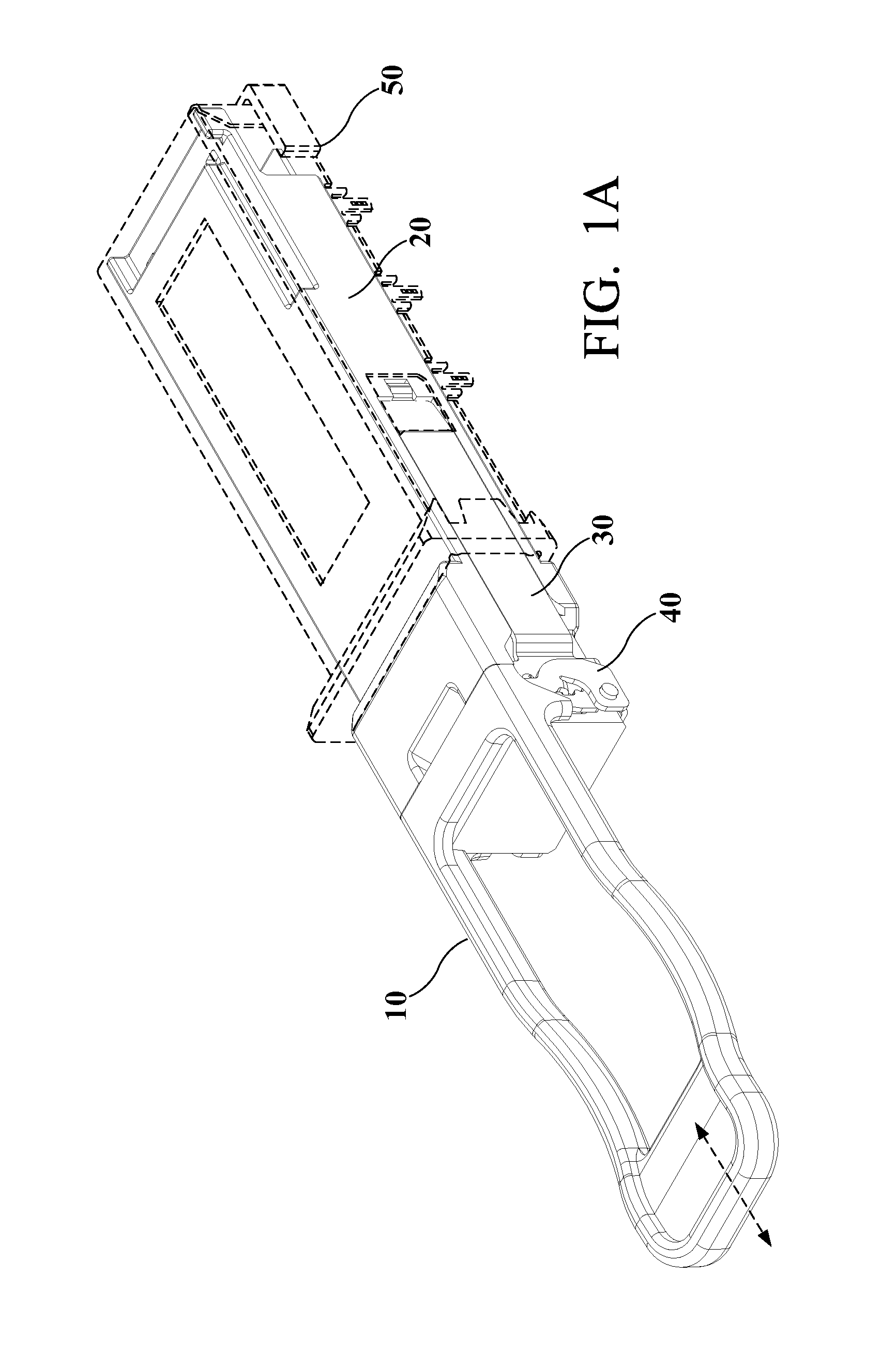Transceiver module release mechanism
a technology of transceiver module and release mechanism, which is applied in the direction of coupling device connection, optical element, instruments, etc., can solve the problems of increasing data transfer rate, increasing complexity of coupling fiber optic cable to array,
- Summary
- Abstract
- Description
- Claims
- Application Information
AI Technical Summary
Benefits of technology
Problems solved by technology
Method used
Image
Examples
Embodiment Construction
[0015]Exemplary embodiments of the present invention disclose a transceiver release system 1 as illustrated in FIGS. 1A to 1B. The release system 1 may comprises a pull tab 10, a transceiver module 20, an arm assembly 30, a bail 40, a cage 50 and a spring 60.
[0016]Each of the said elements shall be described herein. Firstly, Please refer to the FIG. 5A and FIG. 5B, it is clearly shown a the pull tab 10 having a holding portion 12 and a connecting portion 14 connected thereto, the connecting portion 14 has a hollow structure with an axis adapted to allow a hook to be rotatably connected therewith and detachably removed therefrom. However, it should be known that the pull tab 10 is not necessarily be detachable but may also be permanently attached with the bail.
[0017]Please refer to the FIGS. 2A and 2B, FIG. 2A and FIG. 2B depicts a perspective view of the combination of a transceiver module with a spring in various angles. It is clearly shown that the transceiver module 20 having a c...
PUM
 Login to View More
Login to View More Abstract
Description
Claims
Application Information
 Login to View More
Login to View More - R&D
- Intellectual Property
- Life Sciences
- Materials
- Tech Scout
- Unparalleled Data Quality
- Higher Quality Content
- 60% Fewer Hallucinations
Browse by: Latest US Patents, China's latest patents, Technical Efficacy Thesaurus, Application Domain, Technology Topic, Popular Technical Reports.
© 2025 PatSnap. All rights reserved.Legal|Privacy policy|Modern Slavery Act Transparency Statement|Sitemap|About US| Contact US: help@patsnap.com



